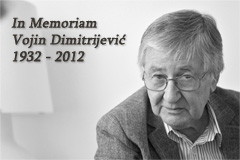Donor: Royal Norwegian Embassy in Belgrade
Duration of the project: December 2014 – December 2015
By reinforcing and developing the outcomes of the previous project cycle, this project worked from April 2013 until April 2015 to provide hands-on policy outputs for the most pressing issues in the areas of asylum and readmission in Serbia. The project was funded by the Royal Norwegian Embassy in Belgrade and was implemented by three partner organizations: Group 484, the Belgrade Centre for Human Rights and the Belgrade Centre for Security Policy. A strong increase in the number of asylum seekers in Serbia has been noticed since 2010. The current capacities for reception and the institutional ability to provide an efficient asylum process have become insufficient and people directly involved in the asylum process clearly indicate various flaws of the Asylum Act, showing the pressing need for it to be amended. On the other hand, Serbia is still facing the challenge of reintegrating its citizens who have been readmitted from EU Member States. It has been particularly serious since the abolition of the visa regime in December 2009. In 2010 and 2011, increased numbers of unfounded asylum applications by Serbian citizens occurred in several EU Member States. To avoid the visa regime restoration, the Serbian Government introduced several administrative measures. However, the major increase in the number of asylum seekers from Serbia in 2012 evidently demonstrates that a true solution to this problem can only be found through genuine social intervention that would increase the quality of life of those asylum seekers.
This project promoted efficient migration management through greater involvement of civil society organisations and their actions at local level. 15 civil society organisations (CSOs) formed two thematic policy-advocacy groups (PAG) within the first year of the project. They were given the opportunity to further enhance their experience and capacities through research, monitoring and policy work. One PAG dealt with issues concerning asylum system in Serbia, while the other PAG worked on problems concerning the readmission of Serbian citizens.
The activities of the asylum PAG consisted of three programme groups: 1) the advancement of legislation; 2) the engagement of more local CSOs; 3) the encouragement of public discussions about the reception of migrants and the virtue of tolerance. The readmission PAG dealt with the issue of new asylum seekers from Serbia and a sustainable social response through new employment policy measures, including the possibility for seasonal labour migration toward specific EU Member States.
At least 25 local CSOs went through basic training on asylum and migration and were given the opportunity to conduct minor local research activities. A larger amount of CSOs was included through public discussions and consultations. Another important target group were national and local government institutions. They were engaged in consultations, discussions, and conferences about specific migration issues raised by this project. Asylum seekers, undocumented migrants and other specifically vulnerable migrant groups were an indirect, but extremely important, target group of this project. Their voice was heard through focus group discussions, consultations, public discussions, and training events for the local CSOs.







